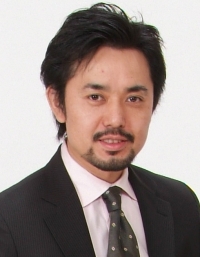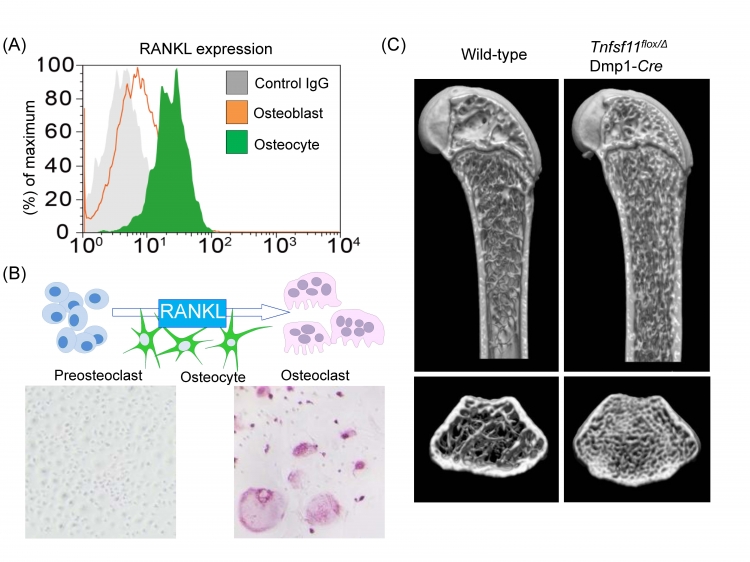Bone biology ~Beyond the boundaries~

Tomoki Nakashima
Professor of Cell Signaling
Profile
Dr. Nakashima graduated from the Graduate School of Pharmaceutical Science, Nagasaki University. In 2002, he joined the Penninger laboratory at the University of Toronto as a postdoctoral fellow. In 2006, he joined the Takayanagi laboratory at TMDU as an assistant professor. In 2013, he became a Principal Investigator at the Graduate School of Medical and Dental Sciences at TMDU.
PDF Download
- Bone biology ~Beyond the boundaries~ (PDF: 562KB)
A: Bone is constantly renewed by the balanced action of bone formation and bone resorption, both of which mainly occur at the bone surface. This restructuring process, called "bone remodeling", is important not only for normal bone mass and strength, but also for mineral homeostasis and haematopoiesis. An imbalance of bone remodeling is linked to various bone diseases. Furthermore, bone traditionally has been regarded as a part of the skeletal and locomotor system, but recent studies suggest that the skeletal system regulates systemic biological functions based on the inseparable link between the bone system and other systems, such as the endocrine system. This systemic network is called the “osteonetwork”.
Using a genetic approach in mice, we established a new method for the isolation of high purity osteocytes. We demonstrated that osteocytes embedded within the bone matrix are the commander cells at the initiation of bone remodeling, through regulation of osteoclastogenesis (1). Furthermore, we recently reported that the semaphorin molecule Sema3A has a crucial role in the regulation of bone remodeling. Sema3A that is derived from osteoblast lineage cells, including osteocytes, inhibits osteoclast differentiation and promotes osteoblast differentiation synchronously to increase bone mass. These studies provide a scientific basis for future therapeutic approaches to bone diseases (2).

Identification of the commander cell in the bone remodeling
A: TMDU is a distinguished institute and known as a world center for the study of hard tissue biology for tooth and bone diseases.. So, research and medicine at TMDU is critical for the future welfare of the human race, and is of particular importance in Japan, the world's most rapidly aging society.
A: We have been studying the mechanism of bone remodeling, intracellular signal transduction and the source of RANKL in the context of osteoclastogenesis. Our recent studies have identified the molecules mediating the communication among cells in bone (3). A molecular-level understanding of the osteonetwork will provide a novel framework for understanding the bone and systemic systems as well as a molecular basis for developing new strategies against various diseases.
1) Evidence for osteocyte regulation of bone homeostasis through RANKL expression, doi:10.1038/nm.2452
2) Osteoprotection by semaphorin3A, doi: 10.1038/nature11000
3) New insights into osteoclastogenic signaling mechanisms, doi: 10.1016/j.tem.2012.05.005

